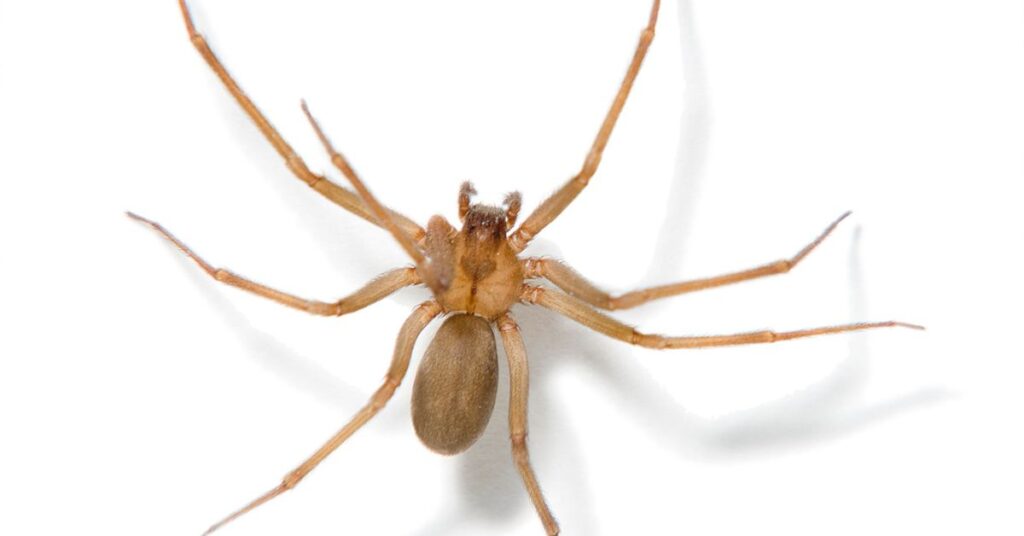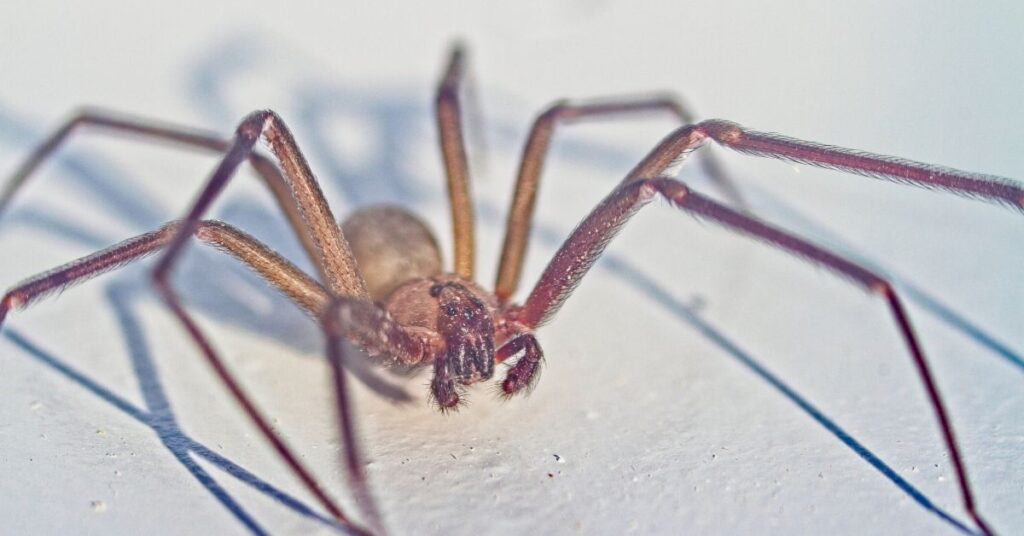
Welcome to our article on the Chilean Recluse spider. The Chilean recluse spider, Loxosceles laeta, is a highly venomous spider of the family Sicariidae, also known as the brown spider, a venomous spider native to South America that has become a cause of concern for many people.
In this article, we will explore some of the most frequently asked questions about the Chilean recluse spider, including its bite, venom, diet, habitat, and appearance.
Appearance

The Chilean recluse spider is a small, brown spider with a violin-shaped marking on its back, resulting in the nickname “fiddleback spider” or “violin spider” in English-speaking areas.
Unlike most spiders that have eight eyes, it has six eyes arranged in two rows, and is about 8–40 mm in size (including legs).
Diet
Chilean recluse spiders feed on insects, small invertebrates, and other spiders. They use their venom to subdue their prey, which they then wrap in silk and feed on later.
Habitat
Chilean recluse spiders are typically found in warm, dry climates, and are often associated with human structures, such as houses and sheds.
It is native to South America but is also common in Chile, and can be found in Peru, Ecuador, Argentina, Uruguay, and south and eastern Brazil.
Similar to other recluse spiders, the Chilean recluse builds irregular webs that frequently include a shelter consisting of disorderly threads. Unlike most web weavers, they leave these webs at night to hunt.
People get bitten when they unintentionally squeeze them in clothing and bedding.
They frequently build their webs in woodpiles and sheds, closets, garages, and other places that are dry and generally undisturbed.
They can last a long time without food or water, a characteristic that encourages their worldwide spread.
What Happens if you Get Bit by a Chilean Recluse Spider?
A bite from a Chilean recluse spider can cause a range of symptoms, ranging from mild to severe. Common symptoms include pain, itching, and redness around the bite site.
In severe cases, the bite can cause more serious symptoms such as nausea, vomiting, fever, and muscle cramps.
In rare cases, a bite from a Chilean recluse spider can cause a condition known as “necrotic arachnidism,” in which the venom destroys tissue around the bite site.
A bite from one of these spiders has been known to be fatal.
How big is the Chilean Recluse Spider?

As previously stated, the Chilean recluse spider is relatively small, with a body length of about 8-40mm (including legs).
How Dangerous is the Chilean Recluse?
This spider is considered to be one of the most venomous spiders in the world.
Although bites from the spider are rare, they can be very dangerous, especially if the bite goes untreated.
If you are bitten by a Chilean recluse spider, it is important to seek medical attention as soon as possible.
What is the deadliest spider in the world?
There are debates over which is the deadliest spider in the world.
One of them is them is the Brazilian Wandering Spider, also known as the Banana Spider. Its venom can cause paralysis and respiratory failure, and it’s responsible for several deaths each year. We have an article dedicated to the Brazilian Wandering Spider here.
The funnel web spider, found in Australia, is also considered to be the deadliest spider in the world. Its venom can cause rapid death if not treated quickly, however, antivenom is widely available and fatalities are now rare. We have an article on Australian funnel web spiders here.
What is the Most Poisonous Recluse?
The most poisonous recluse spider is indeed the brown recluse.
Understanding the dangers of this spider, its diet, habitat, and appearance is crucial in preventing bites.
Stay informed and stay safe from this one!
